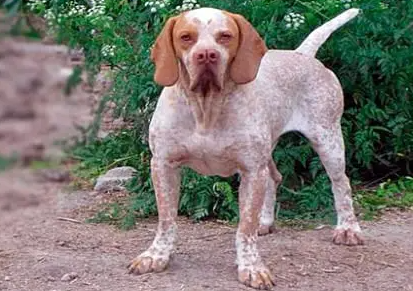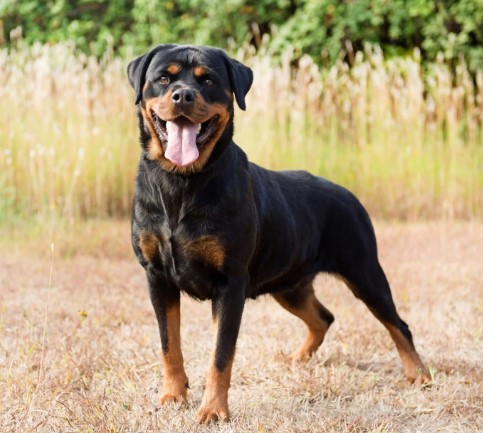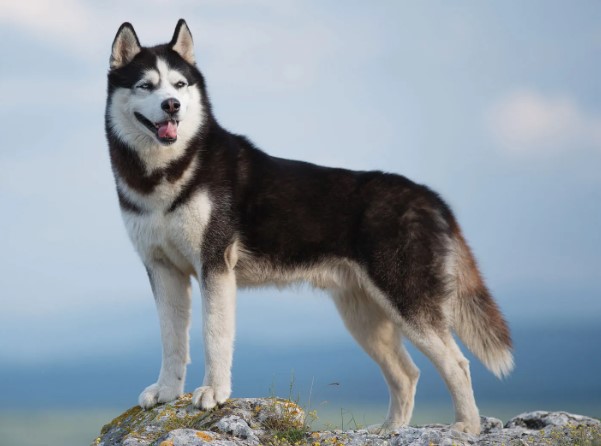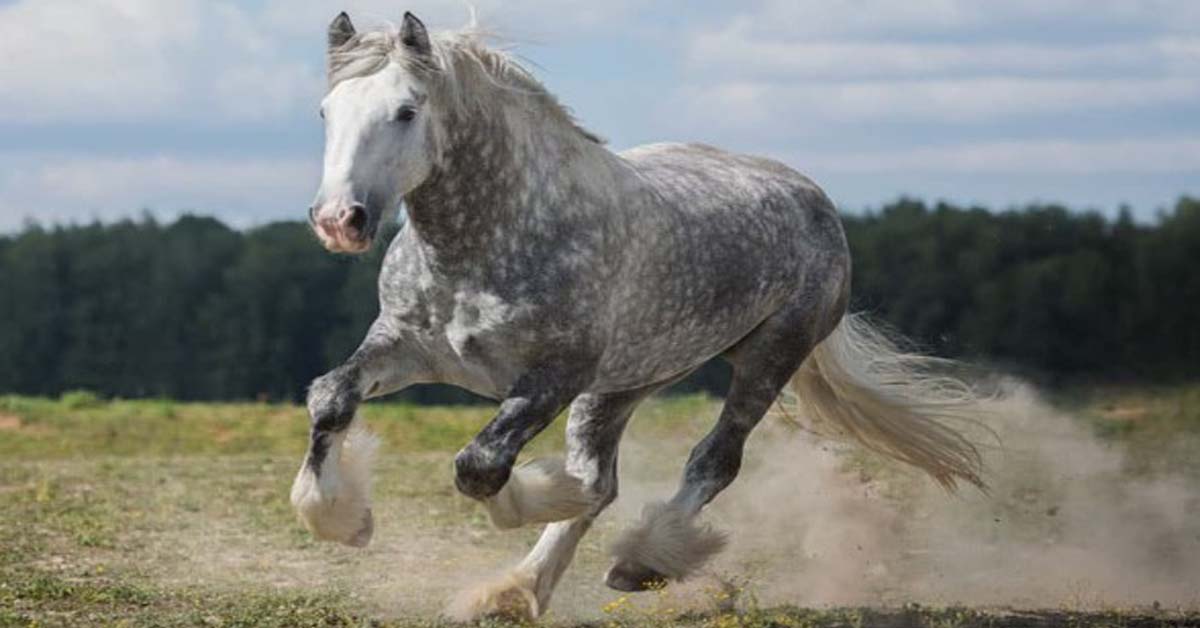Originating from the northern region of Spain known as Navarre, the Pachon Navarro (Plural: Pachones Navarros) is a distinctive Spanish breed of hunting dog specialized in stalking prey.
Initially acknowledged by the Real Sociedad Canina in 1911, the breed faced a decline by the 1960s, leading to concerns about its extinction. However, efforts to revive its lineage commenced in 1979. Subsequently, in 2006, the government of Navarre established a standardized description for the breed, comprising 560 detailed specifications. By 2010, the Pachón Navarro had gained official recognition from the Spanish government as a distinct canine type.
Belonging to a group of five Basque dog breeds, the Pachon Navarro shares its heritage with the Basque Shepherd Dog, the Erbi Txakur, the Villano de Las Encartaciones, and the Villanuco de Las Encartaciones. Notably, many representatives of the breed exhibit a distinctive feature: a split or bifid nose.
- Origin: Navarre, Spain
- Height: 48–60 cm; Dogs average 55 cm, and Bitches average 52 cm
- Weight: The pachon can weigh up to 60–73 pounds more.
- Size: 4-6 puppy
Breed characteristics Of pachón navarro
El perro Pachón Navarro se caracteriza por su tamaño grande, con un peso que varía entre los 20 y 30 kilogramos. En promedio, los machos alcanzan una altura a la cruz de 55 centímetros, mientras que las hembras son ligeramente más pequeñas, con una altura de aproximadamente 52 centímetros. Su esperanza de vida se sitúa en torno a los 14-16 años.
Su cuerpo es robusto y compacto, con una musculatura bien desarrollada y un pecho amplio y profundo. La cola, de inserción media, es recta y gruesa, cayendo en línea con la grupa cuando el animal está en reposo. Las patas son fuertes, bien separadas, y rectas.
La cabeza es grande y ancha, con un hocico amplio y cuadrado. Sin embargo, lo más destacado del Pachón Navarro es la apariencia de su nariz, con fosas bien definidas, separadas y abiertas, cuya importancia se revelará al discutir su salud.
Su perfil es recto, y el color de la trufa varía según el color del pelaje. Los ojos son grandes y redondos, con tonalidades que van desde el castaño hasta el color miel. Las orejas, caídas, tienen una inserción alta, son gruesas y tienen bordes redondeados.
El pelaje es corto y liso, con una textura ligeramente áspera. Existe una variedad con el pelo un poco más largo, conocida como sedeño, que tiene una textura más suave.
| Intelligent: 4/5 Point | Trainability: 5/5 Point |
| Playfulness: 5/5 Point | Sensitivity Level: 4/5 Point |
| Affection Level: 5/5 Point | Social Interaction Required: 5/5 Point |
| Barking: 3/5 Point | Watchdog Ability: 4/5 Point |
| Territorial: 4/5 Point | Mouthiness: 1/5 Point |
| The impulse to Wander or Roam: 4/5 Point | Prey Drive: 5/5 Point |
| Adaptability: 4/5 Point | Tolerates Being Left Alone: 1/5 Point |
| Dog Friendly: 4/5 Point | Health Issues: 5/5 Point |

History
The Pachon Navarro has a rich history dating back to the 12th century in Spain, during a time when there was a trend to develop various colorful breeds of hunting dogs across Europe. Each breeder or club had their own distinct line of dogs, leading to the emergence of numerous new breeds.
The Pachon Navarro stood out with its unique double nose, often likened to the business end of a double-barrel shotgun. The origins of this distinctive feature remain a mystery, lost in the annals of time.
By the 1800s, there was a decision to categorize the diverse breeds into groups, with dedicated breeders and enthusiasts aligning themselves with their chosen group. In 1922, the Pachon Navarro was officially recognized, and a standard for the breed was established. However, tragedy struck in the 1950s when a disease outbreak known as myxomatosis nearly decimated the Pachon population.
This, coupled with losses suffered during the Spanish Civil War, greatly diminished the breed’s numbers. Many believed the Pachon Navarro had been wiped out entirely, but in 1970, a few specimens were discovered in remote villages.
Pressure on the Central Canine Society of Madrid led to an investigation into Spanish breeds, aimed at identifying and preserving those at risk of extinction. Today, the Pachon Navarro is still in the process of recovery, striving to reclaim its place among the diverse array of canine breeds. The goal is to facilitate the breed’s growth without compromising its unique characteristics—a commendable and noble endeavor.
Appearance
The Pachon Navarro is a formidable breed, known for its substantial size, strength, and endurance. Weighing in at up to 60 pounds or more, this breed was specifically bred for its agility and skill in stalking prey.
Characterized by a blocky body, robust muscular neck, and short yet sturdy legs, the Pachon Navarro possesses a distinctive appearance. While some individuals may exhibit longer, silky coats, the majority of this breed sports short hair. Notably, the skin around their necks is loose, adding to their unique physical features.
With a strong, square-shaped head, prominent muzzle, and expressive brows, the Pachon Navarro has a serious and almost enigmatic countenance. Their long nose and drooping lips contribute to their serious expression, while their distinctive features lie in their nose.
Many Pachon Navarros possess a double nose, characterized by two large nostrils separated by a strip of skin, which gives the impression of a singular, yet distinctly divided nose. This feature sets them apart and adds to their intrigue.
Temperament
The Pachon Navarro is known for its attentiveness, energy, and loyalty. These dogs are highly active and enjoy engaging in playtime and games. While intelligent, they can also exhibit a stubborn streak.
As a breed, the Pachon Navarro is characterized by its calm and friendly demeanor, showing great affection towards its family and master. They thrive in environments with plenty of open spaces where they can be active.
With their keen attention and tolerance, they excel at hunting small game and responding to calls from their owner. They are particularly devoted to their owners and require regular exercise to stay healthy and happy. Being outdoors with their family is a preferred activity for them, as they view themselves as an integral part of the family “pack.”
Personality
The sociable nature of the Pachón Navarro makes it enjoy human company, and it can pick up new skills rapidly. Their innate intelligence and eagerness to please make them well-suited for reward-based training methods. However, this doesn’t imply that owners should tolerate anything less than exemplary behavior.
Being pack animals, Pachón Navarros may sometimes be inclined to follow their instincts rather than obey commands. Correcting this tendency by redirecting their focus towards their owner is important. Consistent rules and firmness are essential for maintaining good behavior in this breed.
Health
Rescued from the brink of extinction, present-day Pachón Navarros are descendants of a limited gene pool. However, this can also mean that they are less susceptible to certain hereditary conditions compared to other breeds. These conditions include:
Cleft Palate
The distinctive double nose of the Pachón Navarro is a hereditary trait. However, the gene responsible for the split in the dog’s nose is closely linked to genes associated with a cleft palate. Puppies born with a cleft palate face difficulties in nursing, as milk can flow from their mouth into their nose and down into their lungs. This condition often leads to aspiration pneumonia, which can be life-threatening at such a young age.
While surgical correction of a cleft palate is technically feasible, anesthesia poses a significant risk to very young puppies. Even if successfully corrected, dogs with this condition should not be used for breeding, as their offspring are at a high risk of inheriting the same problem.
Epilepsy
Epilepsy is a seizure disorder characterized by recurrent seizures without an identifiable cause. Symptoms can manifest in young dogs and vary in severity from mild to life-threatening.
While epilepsy cannot be cured, it can often be managed with modern anti-convulsant medications. Thankfully, these medications enable most dogs to live normal lives as long as they continue to adhere to their prescribed treatment regimen.
Hypothyroidism
The Pachón Navarro breed is susceptible to underactive thyroid glands, which can result in a sluggish metabolism. Symptoms include low energy levels and a tendency to gain weight. While this condition cannot be permanently cured, it can be effectively managed with a daily thyroid supplement for the dog’s lifetime.
Hipsterism Dysplasia
Degenerative hip joint disease, known as hip dysplasia, can cause inflammation and discomfort in dogs. While mild cases may be managed with pain relief, severely affected dogs often experience chronic pain and mobility issues. In such cases, the recommended treatment is total hip replacement surgery, although it can be costly.
Antipathetic Skin Disease
Atopy, or allergic skin disease, presents with severe itching in dogs. Excessive scratching can lead to the development of blisters and infections. Treatment options for managing itchiness vary, ranging from cost-effective steroid medications to advanced immunotherapy injections that target and mitigate the allergic response to allergens.

Care
The Pachón Navarro comes in a variety of colors and is known for its excellent hunting abilities and unwavering loyalty to its family. This breed is active, and energetic, and requires ample exercise to stay healthy and happy.
When properly socialized from a young age, Pachón Navarros can be good with children, but they may not always be the best choice for a family pet. While friendly and affectionate, they may not be suitable for inexperienced dog owners. The Pachón Navarro is a robust and lively breed with relatively high maintenance needs, best suited for someone who understands their unique characteristics and requirements.
Best Food For
- Black Gold Explorer Original Performance 26/18 Dry Dog Food
- Black Gold Explorer Puppy Formula Dry Dog Food
- Black Gold Explorer Mature 7+ Formula Dry Dog Food, 40-lb bag
- Black Gold Explorer Game Bird Formula with Turkey & Quail Grain-Free Dry Dog Food, 28-lb bag
Feeding
For every dog owner, especially those new to dog ownership, deciding what to feed their puppy is a crucial question.
The amount of food required by your dog depends on factors such as age, metabolism, size, and activity level. Typically, adult dogs require 1 to 1.5 cups of high-quality dry food, split into two meals.
Consistently feeding your dog the same meal every day isn’t ideal. It’s important to provide variety while ensuring adequate nutrition.
Feeding options vary and may include kibble, canned food, raw meat, home-cooked meals, or semi-moist food, depending on the owner’s preferences and the dog’s preferences. Regardless of the chosen food type, it’s essential to ensure your dog receives a balanced and nutritious diet.
Grooming
The Pachon Navarro requires minimal grooming maintenance. A daily brushing and occasional wipe down with a damp cloth are typically all that’s needed to keep them looking tidy. Brushing helps remove loose hair and debris, keeping their coat healthy.
Regular grooming is particularly important for Pachon Navarro puppies to build a bond between them and their owner. Brushing and grooming sessions should be conducted regularly to ensure their rainfall-resistant coat remains in good condition. Grooming your Pachon Navarro should be a pleasant and stress-free experience for both you and your dog, strengthening the bond between you.
Training
The Pachón Navarro is a sociable dog that thrives on human companionship. Their innate intelligence and desire to please make them well-suited for reward-based training methods.
As a breed known for being family-oriented and eager to please their owners, Pachon Navarros are quick learners, making training both easier and enjoyable. However, their unique personality traits as adults may pose challenges for first-time owners. Patience and consistency are key to improving their mental and physical well-being through training.
Engaging in regular exercise or play sessions until they’re tired, and providing a comfortable space in the car when they’re sleepy, are effective strategies. For dogs that experience separation anxiety, placing their crate in the bedroom can help alleviate distress about being alone.
Exercise
Like the distinctive markings on a stick of Blackpool rock, the Pachón Navarro possesses a deep-seated instinct for stalking. They are inherently active dogs, for whom tracking scents and being energetic are as natural as breathing. Therefore, it’s vital for their overall health and well-being that they receive plenty of exercise.
This means engaging them in hours of vigorous activity every day, ideally off-leash, to allow them to utilize their remarkable tracking abilities and explore freely with their keen noses.
On the flip side, the Pachón Navarro is not suited for a sedentary lifestyle or the confines of apartment living. They have a built-in energy reserve for the day, and if not expended through sufficient exercise, they may resort to unhappy behaviors such as biting or destructive tendencies.
Adoption Center
Other Dog Breeds and Further Research
pachon navarro Dog price in india
pachon navarro Dog Special price ₹2,393











